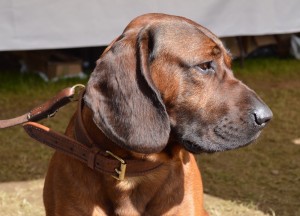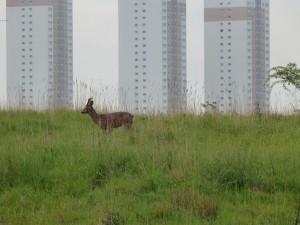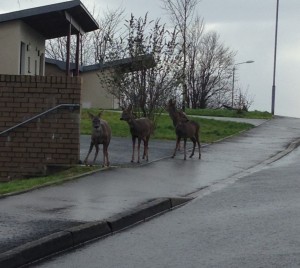In the UK last year (12 months to end June 2014), retail sales of venison increased by over 400% according to Kantar Worldpanel, and that doesn’t take into account what is sold directly by butchers, the restaurant, hotel and catering trade, farmers markets, ‘farm gate’ and mail order sales. To cope with this ever-increasing demand, UK suppliers are importing venison from New Zealand, Poland, Ireland and Spain and industry experts say that the UK is losing out on a lucrative market. In 2013 the equivalent of 29,000 carcases or around 1300 tonnes were imported to the UK from New Zealand alone. But over the last year the Scottish venison market has been limbering up to meet the challenge.
As a result of a campaign to promote the many benefits of venison as a healthy, nutritious and delicious food, and create awareness for the need for more deer farms to cope with demand, over the last six months 200 the first four deer farm demonstration days have seen attendance totalling over 200.
In the last 18 months 80 genuine enquiries about diversification into deer farming have been made to the Venison Advisory Service (VAS), 32 visits to assess potential deer farms at sites all over Scotland have been undertaken by VAS, and 16 detailed studies have been carried out. To date work has already started on six new deer farm units, with a total planned capacity of 2500 hinds. Once on stream these six alone could effectively more than double the current Scottish farmed venison output of 50 tonnes per annum, although in order to meet demand for Scottish breeding stock it is likely that the majority of hinds will be retained while only the stags will go for slaughter.
The objective of the Scottish Venison Partnership, endorsed by the Scottish Government, is to be producing an additional 1000 tonnes of farmed venison per annum by 2020. And it’s not only the farms which will capitalise on a growing demand, but also fencing companies, feed manufacturers, processors etc. This autumn a new dedicated slaughter facility will open in Fife specifically to service the expanding farmed deer sector with a capacity of 100 deer per week.
Spokesperson for the deer and venison industry in Scotland Dick Playfair says:
“It is satisfying to see that there is now some movement in terms of growth. While the issue of Single Farm Payment is resolved in terms of support it will be helpful to know what is in the new SRDP (Scottish Rural Development Programme) that will be of benefit to Scotland’s deer farmers, or not.
“The target for new deer farms we believe is realistic, and not as great in number as we previously thought – indeed if Scotland can achieve 100 new farms with a capacity averaging 250 hinds these could produce in the region of 750 tonnes of venison per annum and give Scotland a really firm grounding in the farmed deer sector.”
During a venison feast lunch at Ballathie Country House Hotel in Perthshire on 28 August media guests were given the opportunity to hear about highland and lowland deer management (including a few words from Ballathie’s own gamekeeper who looks after stalking on the estate), the latest on deer farms, venison industry news and also to experience for themselves the culinary and tasty benefits of venison, thanks to special dishes created by Ballathie chef Scott Scorer.
“We are delighted to have been involved with Eat Scottish Venison Day and to have hosted this lunch as part of the celebrations” says hotel manager Jody Marshall. “Stalking on the Ballathie Estate is popular with our guests and venison is naturally a favourite on our menu. We are fortunate that our head chef enjoys creating interesting venison dishes, making good use of the local Ballathie larder on his doorstep”. Ballathie is featuring venison on the menu for the next fortnight to help celebrate Eat Scottish Venison Day.
Eat Scottish Venison Day is on 4th September and many restaurants, butchers and retailers are putting on special offers and dishes to mark the occasion, including Campbell’s Prime Meat Ltd offering 20% off all venison products during the month of September, Loch Fyne Oyster Bar hosting a special venison BBQ from 12noon to 4pm on the day and Ballathie House Hotel will be featuring venison strongly on the menu for the week.
Visit www.scottish-venison.info for more information about this iconic Scottish product.



